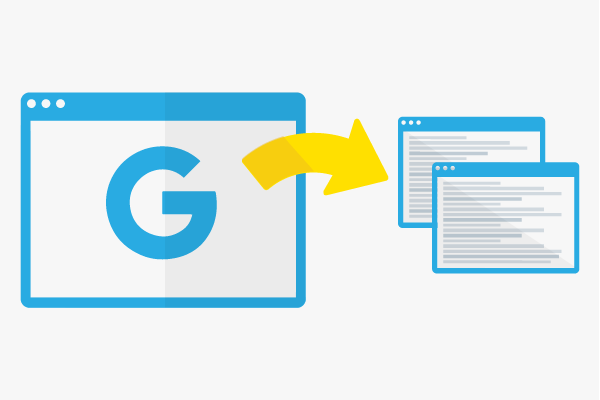AJAX
The technical term AJAX “Asynchronous JavaScript and XML” denotes a technique based on JavaScript technology that changes the communication with the server and accelerates web applications. Interfaces work faster with delayed (asynchronous) data transfer. With AJAX, web applications can exchange data with the server in the background without the complete page having to be reloaded.
Additional software acting between browser and server automatically ensures that large parts of the HTML page are displayed, while user requests are handled on the server in the background. The user interface is updated as needed piece by piece.
Therefore, the entire content of a website doesn’t need to be reloaded with every click, but only the really necessary data. Many web applications were possible after 2005 through AJAX, because users no longer had to keep waiting for the complete reload of the screen. The Google Maps application may, for example, display the desired cut-outs of maps and city plans within seconds.
Ingredients
AJAX is not a programming language, but a combination of several existing standards. According to Jesse James Garrett who coined the name AJAX, the following technologies are included: HTML (or XHTML) and CSS for building and formatting of web forms, the Document Object Model (DOM) for data interaction, XML (or an equivalent technology) for data exchange and JavaScript as central piece of the code for server communications.
Contrast to the classical web application
Traditional web applications store large amounts of data for each user input all at once, so that pauses and waits occur when running. Whereas AJAX buffers pieces of data repeatedly, so that only parts of the user interface have to be re-loaded and very little is lost during connection interruptions. Previously, the interaction between servers and users was dominated by lengthy requests from the browser to the server and users had to wait for extensive data storage processes to get the response.
The AJAX technique eliminates any delays. It works directly within the web browser and executes operations such as data validation without having to query the server every time. It can change the user interface, even as it sends data to and receives data from the server. Thus, data exchange with the server is independent of user input.
Development
Jesse James Garrett, from the Adaptive Path Agency, was likely the first to use the term AJAX in his article “Ajax: A New Approach to Web Applications” published on February 18, 2005, or at least was a very strong influence in any case. The fundamentals of his treatise were previously not entirely unknown, but this combination of technologies has been a topic for discussion under the term AJAX in the media only since 2005, especially since Google has been using this asynchronous communication technology in some well-known applications such as Google Maps, Google Groups or Gmail.
This technology is of great importance for future products in the industry. The World Wide Web Consortium (W3C) introduced an official web standard for Ajax on April 5, 2006.
Examples of AJAX applications
Almost all Web browsers can run AJAX in their more recent versions. One of the best known applications of AJAX is certainly Google Suggest. After each letter, a request is sent to the server for matching queries, which will then be displayed below the search box as a suggestion.
Other typical AJAX-based applications are virtual maps such as Google Maps or OpenStreetMap, mail programs such as Gmail, Office applications such AjaxWrite or iRows. Most social media channels such as Facebook or Flickr, also use AJAX technology.
Importance for SEO
In terms of search engine optimization, when you use AJAX you have to make sure that your website content is still crawlable for Google.

